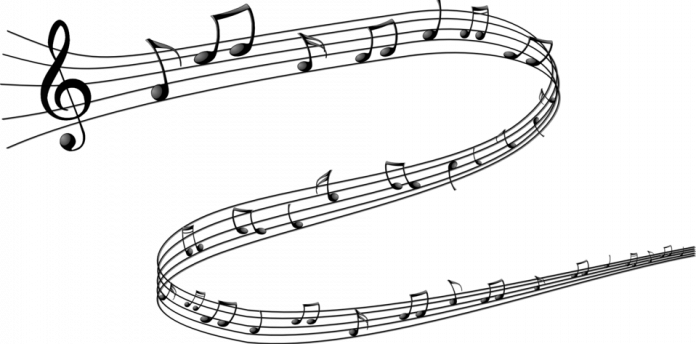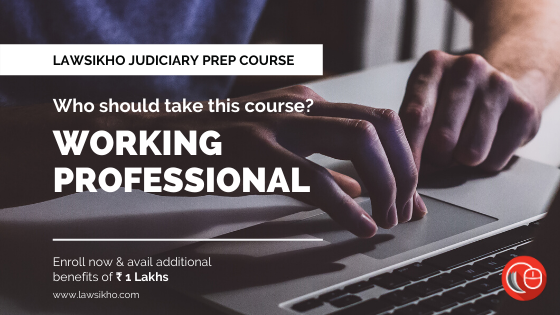This article is written by Poulomi Sen, student of Rajiv Gandhi School of Intellectual Property Law, IIT Kharagpur. In this article, she explains the concept of music sampling which poses a threat to Copyright.
Table of Contents
Introduction
“Thou shall not steal” has been an admonition followed since the dawn of civilization. Unfortunately, in the modern world of business this admonition is not always followed.
-Judge Kevin Thomas Duffy
In very recent times, we have come across certain remakes in Indian music industry embodying samples of the original song and refashioning the authentic songs which are being appreciated as well as criticized by many. Despite the huge popularity of such songs, there is an imposing threat to copyright infringers who without prior permission of the original song makers i.e. the sound recording artist, the lyricist, the music composer, incorporates the material part of the pre-existing song in their musical work. In case, a refashioned song is made available on a commercial platform without taking license from the original creators, the song maker can be held liable for infringing copyright primarily. Even the websites which provides a platform to the primary infringers and uploads their pirated works can be held liable as secondary copyright infringers. Though copyright infringement is per se illegal irrespective of the damage caused, it is quite evident that more the refashioned song gets popular, enabling extraction of huge commercial benefits, the probability of facing a lawsuit becomes high. This article intends to cover the copyright infringements resulting from refashioning songs by music sampling and making mashups and remakes.
Musical work under Indian Copyright Act, 1957
Section 2(p) defines musical work as:
“Musical work means a work consisting of music and includes any graphical notation of such work but does not include any words or any action intended to be sung, spoken or performed with music.”
Lyrics to a song are considered as literary works. In India, separate copyright subsists for musical work, lyrics and sound recording. In US, combined copyright is granted to the song makers, thereby reducing the transaction cost.
By virtue of Section 14(a), the copyright holder of musical work and literary works has the following exclusive right:
- To reproduce the work;
- To issue copies of the work to the public;
- To perform the work in public;
- To communicate the work to the public;
- To make cinematograph film or sound recording in respect of the work;
- To make any translation of the work;
- To make any adaptation of the work.

Refashioning original songs
There are various ways in which an original song can be refashioned:
- By music sampling
- By making mashups
- By making remixes
Refashioning the authentic musical work without permission of the original underlying copyright owner results into:
- Breach of copyright of the original sound recorder.
- Breach of copyright of the original lyricist.
- Breach of copyright of the original music composer.
- Violation of the perpetual moral right of the underlying copyright owners.
Music Sampling
Music Sampling is the re-usage of a substantial portion of a pre-existing song by integrating that part of song in a new musical work. Samples may comprise rhythm, melody, speech, sounds, or entire bars of music, and maybe layered, equalized, sped up or slowed down, pitched, looped, or otherwise manipulated. It is done digitally by extracting a part of the pre-existing song using samplers and incorporated into another.
The term “substantial portion” has to be construed according to the facts of each case. In the case of musical works, the substantial part is not determined note by note, but whether the substance and elementary part of the original work has been incorporated.
UK case: Hawks & Son v Paramount
The use of 20 seconds of a 4-minute long piece of musical work was enough to constitute a substantial part, as the 20 seconds were acknowledged as a crucial and rudimentary part of the original song.
US case: Newton v Diamond & Others (2003)
“It was held that there was no infringement because the use of the flute sample was minimal and there were no substantial similarities between the two works or that the average person would recognize the appropriation.”
Sampling music without taking prior permission or license from the copyright owners of the original song violates their exclusive right of making any derivative work. Failure to obtain license enables the copyright holder to sue the infringer. In order to file a copyright infringement suit, the plaintiff has to prove the following points:
- He is the owner of the musical work in dispute.
- The defendant has incorporated a substantial part of his work.
Music Sampling Cases in the UK and the US
The UK and the US deals with music sampling a bit differently. In the US, the doctrine of fair use can be applied. The defence of ‘fair use’ is very limited and can be used only in specific purposes which includes parody, criticism, news reporting, research, education and similar non-profit use.
In Acuff-Rose Music v. Campbell
The US Supreme Court reversed the decision of lower court stating that the use of pre-existing work in a new song could be ‘fair’ and what is fair has to be construed according to the facts of each case.
UK case of Produce Records Ltd vs BMG Entertainment Ltd
The usage of a 7.5-second sample of ‘Higher and Higher’, a track originally recorded by the Farm and owned by Produce Records, constituted infringement for being the substantial part of the song, when incorporated in their song ‘Macarena’ by veteran Latino duo Los Del Rio.
Bappi Lahiri dragged Truth Hurtz to US courts for incorporating a part of his musical work ‘Thoda resham lagta hai’ in his debut single ‘Addictive’ without taking license and without paying any royalties to Bappi Lahri. The federal court directed to remove the song from the shelves until the composer is acknowledged as the author of the musical work.
Music Sampling in India
Though there is no legal provision explicitly dealing with sampling of sound recording in Indian Copyright Act, 1957; Section 14 provides the owner of copyright certain exclusive rights in order to protect their entire work or a substantial part of the work. The owner of musical work, by virtue of Section 14(a), has exclusive right to make any adaptation of the work. Adaptation under Indian copyright Law is analogous to Section 106(2) of US Copyright Law, derivative work. Adaptation involves the making of a new work from a pre-existing work. Transcription of musical work or any act involving re-arrangement or alteration of an existing work will infringe the copyright holder’s exclusive right to make any adaptive work.
Mashups
A mashup is a piece of recorded music that is comprised entirely of samples taken from other recordings and remixed to create a single new track. A standard mashup encompasses sample from two or more pre-existing songs, involving different artists, integrated into one track by manipulation of elements like tempo and pitch of the vocals as well as the instruments. Mashups are exclusively made by combining pre-existing tracks whereas in remix, samples are combined with a new content.
In the case of Bridgeport v. Dimension, the court observed that it is possible for mashup artists to be guilty of copyright infringement even if one second sample of music is used.
Remixes
A song remix is done by making modifications in the original song by altering the pitch and rhythm and certain other technical elements of the vocals and instruments. In a nutshell, remix is an alternative version of the original song.
A legal notice was sent to Hindustan Coca-Cola Beverage Pvt. Ltd, Hindustan Coca Cola Holdings Pvt. Ltd, Viacom 18 Media Pvt. Ltd, and a compensation of 1 crore was claimed for infringing copyright by remixing the popular Sambalpuri song ‘Rangabati’ by adding English-Tamil rap and Orissa Anthem to it and telecasting it on MTV Coke Studio.
Violation of copyright due to refashioning pre-existing songs
In case, a musical work incorporating a sample of an existing work qualifies the test of originality, the copyright protection will not be extended to that unlawfully copied sample as that portion has no artistic merits of its own. Ultimately music sampling will result into copyright infringement due to the unauthorized inclusion of a substantial part as that particular part will be beyond the scope of copyright protection. On the other hand, some mashups and remixes completely violate copyright and lack the bare minimum original content in it. The work of mashup artist may be any time questioned by the original artists for the lack of originality in their work. Following standards of originality are laid down by various courts:
|
Countries laying down originality tests |
Approached originality Tests |
Standards of originality tests |
|
UK |
Sweat of the brow |
Too low |
|
US |
Modicum of creativity |
Too high |
|
Canada (followed by India) |
Non-trivial, non-mechanical application of labour skill and judgment. |
Average/ medium |
Refashioning any song by any of the modes discussed above without the grant of license by the original copyright holder will result in:
1) Primary or direct copyright infringement.
2) Secondary or indirect copyright infringement.
Primary Copyright infringement
Section 51(a)(i) of Indian copyright Act deals with primary copyright infringement. There are two ways of primary infringement:
- Without taking license.
- Taking license but acting beyond the rights conferred by the license.
Primary copyright infringement, due to music sampling, takes place because of violation of the following rights
-
Violation of 14(a) – Rights of the Copyright Owner
The owner of musical work, by virtue of Section 14(a), has exclusive right to make any adaptation of the work. Adaptation under Indian copyright Law is analogous to Section 106 of US Copyright Law, derivative work. Adaptation involves the making of a new work from a pre-existing work. Transcription of musical work or any act involving re-arrangement or alteration of an existing work will result into infringement of copyright holder’s exclusive right to make any adaptive work.
-
Violation of 14(e) – Rights of the Sound Recorder
Further, the communication of such musical work by making it available in a commercial platform will result in infringement of 14(e)(iii) rights of the original sound recorder. A sound recording artist, by virtue of Section 14(e) of Indian Copyright Act, 1957, has the following rights:
- To make any other sound recording embodying it.
- To sell or give on hire, or offer for sale or hire, any copy of the sound recording.
- To communicate the sound recording to the public.
-
Violation of Copyright Holder’s Moral Right
By virtue of Section 22 of the Copyright Act, term of copyright in a published literary and musical work subsists until 60 years after the death of the copyright owner. But the moral rights which the copyright owner has by virtue of Section 57 are perpetual. Section 57 intends to protect a creator’s right of integrity and hence bars intentional distortion, mutilation, or other modification of a work if such distortion is likely to harm the author’s honour or reputation.
- In case the new song incorporating samples of pre-existing songs is prejudicial to the honour and reputation of the original copyright holders, it will be violating their moral right.
- In case modifications and alterations are done in the existing song is prejudicial to the honour and reputation of the original copyright holders, it will be violating their moral right.
Secondary Copyright Infringement
Secondary infringement occurs only when prior direct infringement exists. The purpose is to hold all those infringers accountable for violating copyright of the original creator who indirectly contributes to the copyright infringement by extending substantial support and aiding the primary infringers to breach copyright. Section 51(a)(ii) and Section 51(b) deals with secondary liability.
Section 51(a)(ii) holds the person liable who facilitates copyright infringement by allowing a place (physical/virtual) to be used for communication of the copyrighted work provided that he had prior knowledge(constructive/actual) that his acts will result into copyright infringement.
Elements of Secondary Copyright Infringement:
- The defendant must be permitting a place, which may be physical or virtual, which either belongs to the defendant or he has actual control over it.
- He is extending such support for commercial benefits.
- Communicating such pirated work to the public which is per se infringing the original copyright holder’s copyright.
- He must be having actual or constructive knowledge that his act of communicating the pirated work violates copyright of the original copyright holders.
Section 51(b) holds the person liable for secondary infringement when that person distributes or deals with the infringing copies of the copyrighted work.
Therefore, the websites uploading such pirated contents will be held accountable as secondary infringers for facilitating the primary infringers with the medium through which public gets access to such works and extracts commercial benefit due to communication of such works.
Many artists release their refashioned musical work on P2P networks without obtaining a license of the work. The rationale behind this is that P2P network maintains dynamic directory and does not store the contents of the work. The moment the users log out from the server, the content is no longer available and hence cannot be accessed. Based on the popularity gained on that platform, the artists obtain the license by paying royalty; they obtain a license and release it legitimately.
Legal usage of music samples
The fundamental purpose of copyright is to strike a balance between the interests of the copyright owner and the interests of copyright consumers.
Therefore to strike the balance, sampling of music can be made legal in case:
1) It comes under the exception of fair use or de minimis use.
2) License is taken from original copyright holders before using their piece of work.
Doctrine of fair use
Doctrine of fair use is a defence to copyright infringement that allows restricted use of copyrighted work without the owner’s permission. Fair use doctrine was fabricated in order to protect the right to freedom of expression for works which are precious and valuable to society. Section 52 of the Indian Copyright Act deals with fair use doctrine. According to Section 107 of the US Copyright Act, in order to take this defence, the defendant has to qualify a four-factor test:
(1) the “purpose and character of the use,”
(2) the “nature of the copyrighted work,”
(3) the “amount and substantiality of the portion used in relation to the copyrighted work as a whole” and,
(4) the “effect of the use upon the potential market for or value of the copyrighted work.”
Though no single factor of the fair use test is necessarily determinative, the “purpose and character of the use” of the infringer’s work normally weighs heavy in the judge’s decision. If the purpose is to make a genuine parody of satire of the original musical work, the alleged infringer can be excused.
This doctrine can never be easily applied as this doctrine has very narrow application and is construed according to the facts of each case. Moreover, the risk involved in taking of the defence of fair use is that once the defence fails, one will be liable for copyright infringement. If a composition is completely remodelled into a new work, such as a parody song, it can be considered to be a fair use and hence can be exempted from the liabilities. This doctrine is applicable where a work is created in order to comment and criticize a pre-existing work. However, this doctrine is not reliable in case where songs are refashioned and subsequently uploaded for commercial purposes.
Obtaining license
In order to refrain from any legal issues, a license should be obtained from the underlying copyright holders before remodeling the original musical work and the necessary royalties should be paid to them based on estimated revenue generated from the refashio.ned musical work. The consent of copyright holder in granting the license is very vital as his refusal to grant license will lead to copyright infringement.
- Mechanical license can be taken for the purposes of distribution of the musical work
- Attribution license under Creative Commons allows people to copy, distribute, display, and perform the copyrighted work and to create derivative works. Therefore, attribution license can be taken for making mashups and remix. But they have to make sure that all the copyright holding artists are getting proper credits.
- For non-commercial purpose, Non-Commercial licenses can be obtained by which one is at the liberty to do anything with the song, but the song cannot be used for commercial purpose.
In the case of Gramophone Co. Of India Ltd. vs Super Cassette Industries Ltd.
The plaintiff offered the defendant a license fee for making audio cassettes incorporating the original sound recording of Ganapati Aarti. Despite the refusal of the defendant to grant license, he made the cassettes and was held liable for copyright infringement.
There is no provision mentioned in the Indian Copyright Act regarding licenses required to be taken for music sampling, making remixes and mashups as it is provided for cover versions. In cover versions, there is no need to take special permission from the artists to cover their song but to upload mashups and remixes there is need of doing so, as mashups, music sampling and remixes are adaptation of original musical work or works.
In India, lyricist and music composers are represented by Indian Performing Rights Society and a sound recording artist is recognized by Phonographic Performance Limited. Therefore their contact information can be acquired through the appropriate organization’s database.
In Bridgeport Music v Dimension Films, the court said, “Get a license or do not sample- we do not see this as stifling creativity in any significant way.”
Therefore to legally use a sample, an artist must acquire legal permission from the copyright holders, and obtain a license known as clearance from:
- Original sound recording artist.
- Original lyricist.
- Original music composer.
In case a refashioned musical work is uploaded on commercial platforms like Sound cloud of YouTube without obtaining a license, the platforms can go to the extent of taking down such pirated works after giving prior ‘takedown’ notice.
Relief granted to copyright owners for copyright infringement
- Statutory damages: Such monetary compensation is fixed by statute and is neither subject to the discretion of court nor depends on the actual loss suffered by the copyright owner.
- Injunction: Court can direct the infringer to completely refrain from refashioning the original musical work.
Conclusion
Music sampling, making mashups and remixes can result in copyright infringement enabling the copyright holders to sue the primary as well as secondary infringers. To avoid this, before incorporating a sample of pre-recorded song into a new song, a clearance license should be obtained from the sound recorder, music composer and the lyricists and royalty fee should be paid to them. Also to avoid risk, while making remixes by modifying the original song, prior permission should be taken from the copyright holders of the original song.
LawSikho has created a telegram group for exchanging legal knowledge, referrals and various opportunities. You can click on this link and join:
 Serato DJ Crack 2025Serato DJ PRO Crack
Serato DJ Crack 2025Serato DJ PRO Crack











 Allow notifications
Allow notifications



